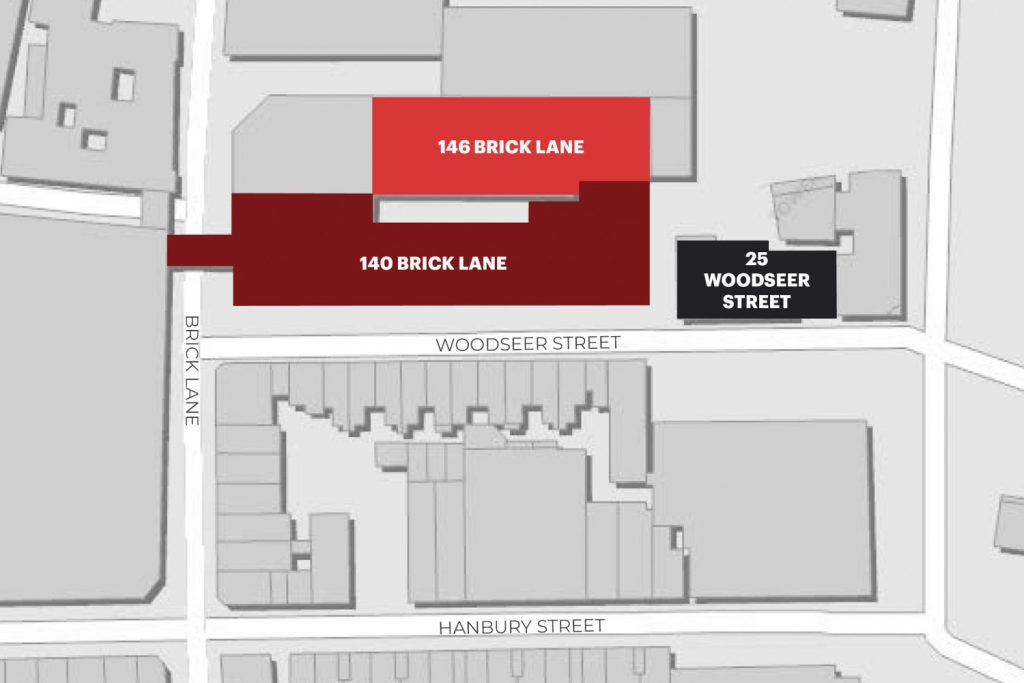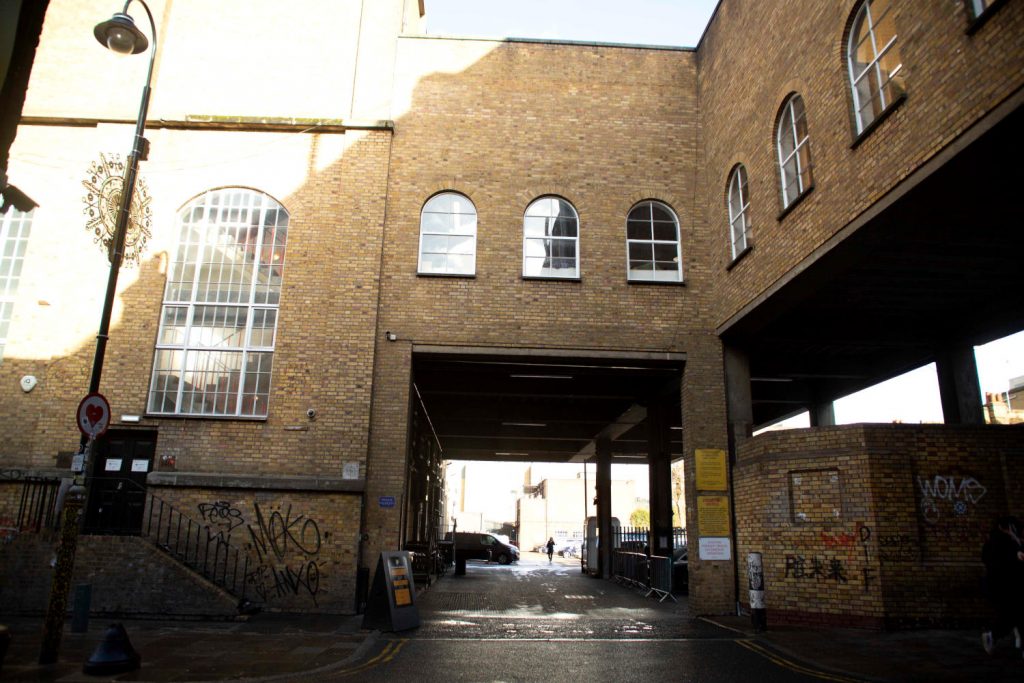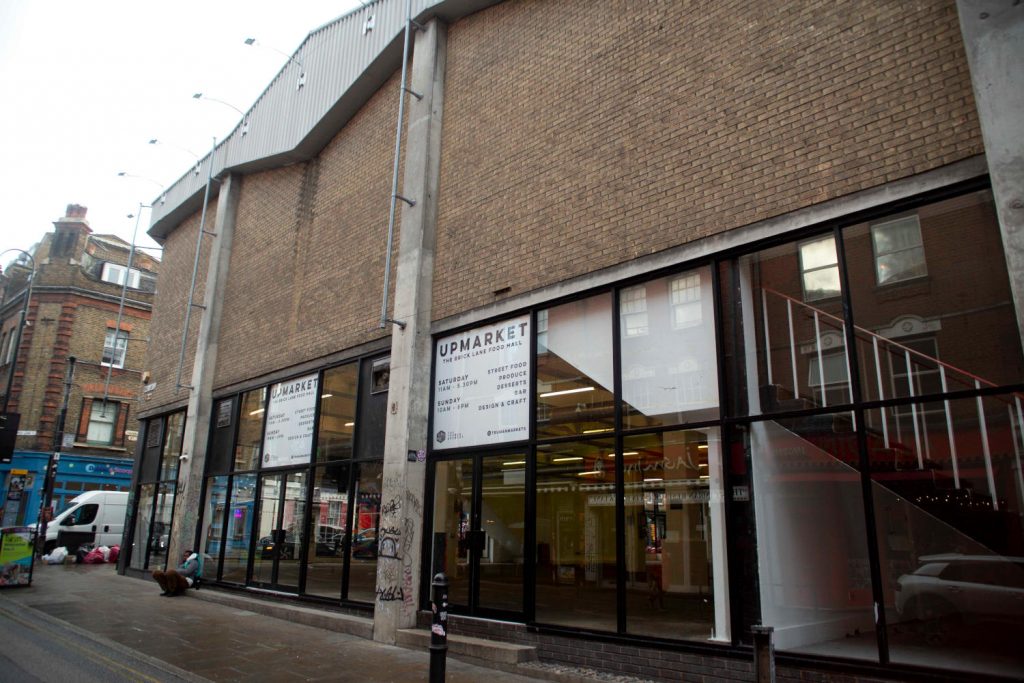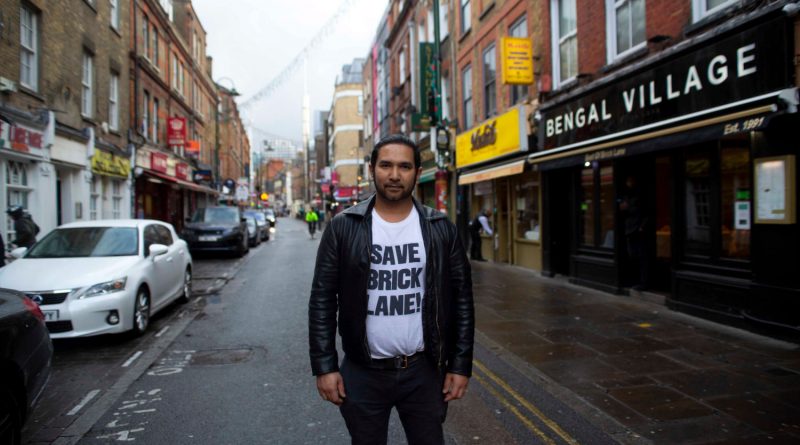What the Save Brick Lane campaign is really fighting for
Why is the Save Brick Lane campaign fighting the redevelopment of the Truman Brewery?
Brick Lane holds a furtive place in the imagination of those who haven’t even stepped foot in the East End. Its reputation glistens with the allure of bric a brac treasures, curry houses and bagel bars alike, hand crafted leather, and artworks ranging from street graffiti to best of the Brit Art movement.
Blink, and you’ll miss the ebbs and tides of change on the street. Like the Nomadic Gardens, a community garden and oasis in the throng of the city, that seemed to disappear as quickly as it did pop up.
It has been a sanctuary for working class communities and those seeking refuge for centuries: from the 17th century Huguenot silk weavers fleeing religious persecution in France, Ashkenazi Jews from Eastern Europe, and most recently Bangladeshi Muslims following Bangladesh’s independence in the 1970s.
Upheld as an exemplar of British multiculturalism, Brick Lane is both enchanted and haunted by its history of opportunity and entrepreneurship, and of the fight for recognition and equal resistance to it.
Until of late, there has been a harmonious relationship between the Southern end of the street known as Banglatown and the Northern end, which still houses vestiges of its Jewish history like the beigel shops, as well as vintage shops and cafes.
However, splatterings of the street’s gentrification wink at what might be to come. The most notorious examples of which are (the late) Cereal Killer Cafe, where bowls of golden grahams are served at a premium price, and the bar Alcotraz Penitentiary where punters in faux prison boiler suits are served cocktails (a far cry from authentic moonshine) by prison guard cum bartenders. A business model trivialising smuggling and the experience of prison reveals an insidious disjuncture from the area’s history coloured by racism, poverty and over criminalization.
Experiences and venues like these have attracted tourists with disposable incomes that have upped the general retail value of the street. The northern end tends to now get more footfall, which many argue has been at the expense of the southern end.
The Truman Brewery, a former brewhouse built in 1666, demarcates the street’s halfway point. It is owned by the Zeloof Partnership who also own10 acres of surrounding land. In 1989 the brewery stopped brewing and became home to 300 other small businesses, including 205 microbusinesses.
The Zeloofs now have plans to redevelop a portion of the brewery site along Woodseer Street (as situated in the image below) into a five storey retail centre and office space. This will replace a large carpark and two existing buildings. There are also rumours of a second phase of the development being imminent.


The Woodseer development website proposes that it will create 700 new full time equivalent jobs, additional footfall and spending in the local economy and approximately £1.7m in additional business rate payments to the Council a year.
And yet, the scale of resistance to the development has been nothing less than extraordinary. With objections of more than 7,000 people and 140 local businesses orchestrated by a coalition of community figures and organisations under the banner of Save Brick Lane, tensions are high.
Dr Fatima Rajina of the radical Bangaldeshi campaign group Nijjor Manush argues that this development is the crucial tipping point of overrun development in the area, and it has brought together otherwise non affiliated organisations and individuals in shared concern.
A coalition of resistance has grown up from the grassroots, in a unique confluence of demographics and interests. The campaigner’s efforts have been rigorously concerted, manifested in hours of voluntary door knocking; the Save Brick Lane exhibition hosted by the social centre House of Annetta; a striking funeral procession in September 2021 preemptively mourning the street’s so-called death; and regular information sharing and organising opportunities.
Nonetheless, as of 14th September 2021 the plan was approved.
Undeterred by the decision, and motivated by the success of similar campaigns such as the Latin Village in Tottenham, Save Brick Lane is Crowdfunding to challenge the decision in the courts through judicial review.
The campaigners are operating as a conduit between the developers and Tower Hamlets Council and the community. They want to show what is at stake by the development, and to discepher the convoluted arguments about the benefits of development amongst concerns of the preservation of cultural heritage.
The campaign is acting with urgency as the approval of the development will set a precedent for future planning, steamrolling change into the wider East End.
Heloise Palin from Spitalfields Trust explains that at the core of this is the question of the ways in which local democracy operates in planning decisions. The judicial review will argue that the planning decision was unlawful because the:
“Councillors were unlawfully told that they could not vote on the application at the September 2021 Development Committee meeting if they had not been present at the earlier April 2021 meeting which had deferred the application. All members of the committee (and substitutes) who were present (or who would have been present without the instruction) were entitled to vote”.
Originally, 6-8 councillors were to vote on the decision, but only three did. Both Councillor Kevin Brady and Kahar Chowdhury voted for the planning to go through, whilst the Meeting Chair Abdul Mukit Chunu voted against.
Despite Councillor Limma Qureshi joining online due to coronavirus and childcare duties, she lost her voting right for not being physically present. She later said that she would have voted against it, tipping the balance into stalemate.
Save Brick Lane argues that the decision of three councillors does not adequately represent the 7000+ objections.
Tower Hamlets Mayor John Biggs commented on the decision on Twitter, sympathising with “the concerns of residents and business owners that increasing development threatens the character of the area and the viability of our small business community. I share these anxieties.”
The trickle-down effect of who decides what is best for the community or not are manifold.
In initial planning stages, concerns regarding the site’s provision of affordable business rents were raised. Despite the Zeloof’s response and following revisions to the plans to increase the provision of spaces let below the ‘indicative market rate’ from 30% to 45%, there is staunch scepticism as to what this really means.
Palin of the Spitalfields Trust likened the provision of affordable workspaces to the language used around the building of ‘affordable housing’ as opposed to social housing. The reality of which does not take into account people’s actual living wages, and is therefore more often than that not, unaffordable.
Saif Osmani, a local artist who grew up on Woodseer Street, worries that with such big development comes uniformity, collapsing the space for genuine entrepreneurship and equal opportunity – much like we’ve seen with developments like Spitalfields Market, Fruit & Wool Exchange and Norton Folgate.

Niijor Manush describes these ‘soulless corporate developments’ as inflicting ‘ugly steel and glass blocks’ that are at odds with original old brick buildings and narrow streets.
Similarly, Osmani describes the Truman Brewery’s architectural plans to replicate ‘fake factory’, Brooklyn warehouse-esque facades as ‘pastiche’, and whose brick slip frontages cover up real heritage.
As well as footfall being directed into the enclosed retail centre and invariably away from the rest of the street, there are concerns that the space will soon create a monopoly on the local business rents. The borough already has the third-highest rent for studios and one-bedrooms in London.
He laments affordable access to arts and a time when you could walk into galleries to talk with the owners. He says, instead, Brick Lane is seeing a move towards ‘high-end, drawing room art’.
He distinguishes between the fact artists themselves are often struggling financially, whereas those ‘around the arts’ seem to be on good salaries: ‘This is where we are seeing segregation’.
In the Save Brick Lane Conference which took place on the 12th of March, Councillor Puru Miah of Mile End debunked the argument that trickle-down economics – a theory that the wealth of corporations and the rich trickle down to everyone else – works in contexts like these. For example, of every £1 spent in a big, global corporation like Tescos, only 10p goes back to the community, comparatively to 80p of every £1 spent in a locally-owned shop.
The street’s curry houses use local shops like Taj Stores to buy supplies, unlike other chain restaurants that outsource. It is part of the very reason that with the growth of surrounding developments in the last 15 years, there has been a simultaneous 62% decline of the curry houses.
Furthermore, the Zeloof Partnership has a bank account in the tax haven Jersey; the question of how this could ever benefit those in Brick Lane is being asked.
The fear is that the development will have a further diminishing effect on what has become the most prominent embodiment of the area’s Bangladeshi cultural identity – its food.
Saif points out this isn’t just a ‘Bangladeshi issue’. This scale of financialization means ‘everything we value locally is under threat’.
In this sense, Rajina argues that the Truman Brewery development goes ‘beyond gentrification’, and is in fact a matter of ‘social cleansing’.
Some have argued that the development is the latest iteration of inevitable change, synonymous with the fact many Bangladeshis are moving out of the area. Osmani is quick to quash this idea: “This isn’t some kind of ‘natural migration’. It’s important to recognise that it is policies like these that push people out”.
With cuts to councils’ budgets, there is an increasing onus for the Council to generate income through business rates and council tax. These rates are determined by the value of the properties, which will invariably increase thanks to developments like the Truman Brewery.
Councillor Miah argues that this “serious issue with cash flow” is the cause of “a chasm between the rhetoric of the council and the actualities of governance”. Evidence on the ground begs the question, who really benefits from developments like these?
The coalition’s own data collection spearheaded by Osmani and Rajina found that 71% of the people they met were younger Bangladeshis, who felt like they had less access to Brick Lane than their previous generations.
To better serve the local community Osmani wants the Council to invest in building the area from the ground up. He believes increasing people’s digital literacy will enable them to participate in local democracy: “the majority of residents don’t even know that they have a right to object at all.”
Platforms like the Spitalfields and Banglatown Forum aim to educate local residents on decision-making opportunities and make participation more accessible. Here people have expressed the want for more social housing and access to open space.
It’s evident that the Truman Brewery development stands for more than first meets the eye, and that the future of Brick Lane has far-flung significance. This story harks to the wider tales of the nation and its relationship with both immigration and development.
It has become a potent mantle of discussion about the ways in which planning, investment and local democracy play out. Councillor Miah goes as far as to say that top-down investments like these simply do not work and that there are enormous leakages of wealth out of the borough. He says that Adam Almeida’s research that shows Tower Hamlets is the most gentrified borough in London is not surprising.
But it is not too late to seek out alternative paths. Miah cites the ‘Preston model’ as an example of a ‘city taking back control’ by investing directly into communities so that wealth is not extracted but held, and recirculated.
Brick Lane has seemingly forever been in flux, but its campaigners are fighting fervently to show how it is this development that brings it to the tipping-point of non-return, from a flux that has shaped itself around the needs of the community, to a fixed corporate vision that will extinguish the local culture that has been the fire of Brick Lane’s enduring success.
Ultimately, it symbolises what we want to prioritise as a society, and who.
You can contribute to Save Brick Lane’s judicial review crowdfunder here.


Really good article